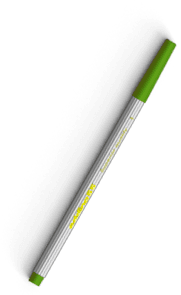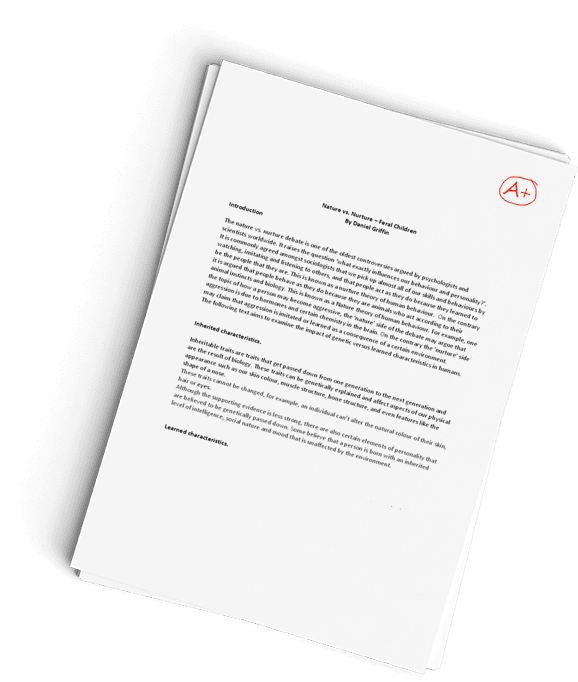PROFESSIONAL ACCOUNTABILITY- develop a working knowledge of nursing theory, nursing ethics, and professional accountability and apply these concepts to your professional clinical practice
Question Description
INTRODUCTION
The purpose of this task is to develop a working knowledge of nursing theory, nursing ethics, and professional accountability and apply these concepts to your professional clinical practice. You will be required to think about real-life scenarios and how they relate to nursing codes in your professional practice.
REQUIREMENTS
Your submission must be your original work. No more than a combined total of 30% of the submission and no more than a 10% match to any one individual source can be directly quoted or closely paraphrased from sources, even if cited correctly. An originality report is provided when you submit your task that can be used as a guide.
You must use the rubric to direct the creation of your submission because it provides detailed criteria that will be used to evaluate your work. Each requirement below may be evaluated by more than one rubric aspect. The rubric aspect titles may contain hyperlinks to relevant portions of the course.
A. Identify a nursing theory that has influenced your values and goals.
1. Explain how nurses apply the identified theory from part A to implement excellent nursing practices.
2. Discuss how the identified theory from part A fits your professional practice.
B. Identify the contributions of two historical nursing figures in the nineteenth or twentieth century.
1. Compare the differences in contributions of the two historical figures identified in part B.
2. Describe how the contributions of the two historical figures influence your professional nursing practice.
C. Explain the functional differences between the State Board of Nursing and the American Nurses Association (ANA).
1. Define the roles of these two organizations.
2. Explain how these two organizations influence your nursing practice.
3. Explain the requirements for professional license renewal in your state.
a. Discuss the consequences of failure to maintain license requirements in your state.
4. Compare the differences between registered nursing license requirements in a compact state versus a non-compact state.
D. Discuss the functional differences between the Food and Drug Administration and the Center for Medicare and Medicaid Services (see the web links below).
1. Discuss how the two regulatory agencies influence your professional nursing practice.
a. Describe your role as a patient advocate in promoting safety when a patient has requested to use an alternative therapy.
E. Discuss the purposes of the Nurse Practice Act in your state and its impact on your professional practice.
1. Discuss the scope of practice for a RN in
2. Discuss how your state defines delegation for the RN.
F. Apply each of the following roles to your professional practice:
• a scientist
• a detective
• a manager of the healing environment
G. Identify two provisions from the American Nurses Association (ANA) Code of Ethics (see web link below).
1. Analyze how the two provisions identified in part G influence your professional nursing practice.
2. Describe a nursing error that may occur in a clinical practice (e.g., clinical setting, skills lab, or simulation).
a. Explain how the ANA provisions identified in part G can be applied to the error discussed in part G2.
H. Identify four leadership qualities or traits that represent excellence in nursing.
1. Discuss the significance of the four leadership qualities identified in part H in the nurse’s role as each of the following:
• a leader at the bedside
• within a nursing team or interdisciplinary team
2. Identify how your work environment impacts the following:
• nursing leadership
• decision making
• professional development
I. Acknowledge sources, using APA-formatted in-text citations and references, for content that is quoted, paraphrased, or summarized.
J. Demonstrate professional communication in the content and presentation of your submission.
File Restrictions
File name may contain only letters, numbers, spaces, and these symbols: ! – _ . * ‘ ( )
File size limit: 200 MB
File types allowed: doc, docx, rtf, xls, xlsx, ppt, pptx, odt, pdf, txt, qt, mov, mpg, avi, mp3, wav, mp4, wma, flv, asf, mpeg, wmv, m4v, svg, tif, tiff, jpeg, jpg, gif, png, zip, rar, tar, 7z
NOT EVIDENT A nursing theory that has influenced the candidate’s values and goals is not identified.
|
The nursing theory is identified, but it is not relevant to the candidate’s values and goals. |
A nursing theory that has influenced the candidate’s values and goals is identified. |
A1: EXCELLENT NURSING PRACTICES
NOT EVIDENT An explanation of how nurses apply the selected theory in part A to plan excellent nursing practices is not provided.
|
The explanation of how nurses apply the selected theory in part A to plan excellent nursing practices is illogical. |
The explanation of how nurses apply the selected theory in part A to plan excellent nursing practices is logical. |
A2: PROFESSIONAL PRACTICE NURSING THEORY
NOT EVIDENT A discussion of how the theory from part A fits the candidate’s professional practice is not provided.
|
The discussion of how the theory from part A fits the candidate’s professional practice is irrelevant, or it inaccurately addresses the identified theory. |
The discussion of how the theory from part A fits the candidate’s professional practice is relevant, and it accurately addresses the identified theory. |
B: CONTRIBUTIONS OF 19TH OR 20TH CENTURY HISTORICAL NURSING FIGURES
NOT EVIDENT An identification of the contributions of 2 historical nursing figures in the nineteenth or twentieth century is not provided.
|
Not applicable. |
The contributions of 2 historical nursing figures in the nineteenth or twentieth century is identified. |
B1: DIFFERENCES IN CONTRIBUTIONS
NOT EVIDENT A comparison of the differences in contributions of the two historical figures discussed in part B is not provided.
|
The comparison inaccurately addresses the differences in the contributions of the 2 historical figures identified in part B, or the comparison is illogical or not supported. |
The comparison accurately addresses the differences in the contributions of the 2 historical figures identified in part B and is logical and well supported. |
B2: DESCRIPTION OF HISTORICAL FIGURES
NOT EVIDENT A description of how the contributions of 2 historical nursing figures have influenced the candidate’s nursing practice is not provided.
|
The description of how the contributions of 2 historical nursing figures have influenced the candidate’s nursing practice is inaccurate. |
The description of how the contributions of the 2 historical nursing figures have influenced the candidate’s nursing practice is accurate. |
C: STATE BOARD OF NURSING VERSUS ANA
NOT EVIDENT An explanation of the functional differences between the State Board of Nursing and the American Nurses Association (ANA) is not provided.
|
The explanation of the functional differences between the State Board of Nursing and the ANA is inaccurate or not supported. |
The explanation of the functional differences between the State Board of Nursing and the ANA is accurate and well supported. |
NOT EVIDENT A definition of the roles of the State Board of Nursing and the ANA is not provided.
|
The definition of the role of the State Board of Nursing and the role of the ANA is provided, but it contains inaccuracies, or it is not supported by verifiable facts. |
The definition of the roles of the State Board of Nursing and the ANA is provided and supported. |
C2: INFLUENCE OF THE STATE BOARD OF NURSING AND ANA
NOT EVIDENT An explanation of how the State Board of Nursing and the ANA influence the candidate’s nursing practice is not provided.
|
The explanation of how the State Board of Nursing and the ANA influence the candidate’s nursing practice is inaccurate or irrelevant. |
The explanation of how the State Board of Nursing and the ANA influence the candidate’s nursing practice is accurate and relevant. |
C3: REQUIREMENTS FOR PROFESSIONAL LICENSE RENEWAL
NOT EVIDENT An explanation of the requirements for professional license renewal in the candidate’s state is not provided.
|
The explanation of the requirements for professional license renewal in the candidate’s state is inaccurate or not supported. |
The explanation of the requirements for professional license renewal in the candidate’s state is accurate and well supported. |
C3A: FAILURE TO MAINTAIN LICENSE REQUIREMENTS
NOT EVIDENT A discussion of the consequences of failure to maintain license requirements in the candidate’s state is not provided.
|
The discussion of the consequences of failure to maintain license requirements in the candidate’s state is inaccurate. |
The discussion of the consequences of failure to maintain license in the candidate’s state is accurate. |
C4: COMPACT VERSUS NON-COMPACT STATE
NOT EVIDENT A comparison of the differences between registered nursing license requirements in a compact state versus a non-compact state is not provided.
|
The comparison inaccurately addresses the differences between registered nursing license requirements in a compact state versus a non-compact state, or it is not supported. |
The comparison accurately addresses the differences between registered nursing license requirements in a compact state versus a non-compact state and is well supported. |
D: AGENCIES FUNCTIONAL DIFFERENCES
NOT EVIDENT A discussion of the functional differences between the given regulatory agencies is not provided.
|
The discussion of the functional differences between the given agencies is inaccurate or not supported. |
The discussion of the functional differences between the given agencies is accurate and well supported. |
D1: INFLUENCE ON PROFESSIONAL PRACTICE
NOT EVIDENT A discussion of how the regulatory agencies influence the candidate’s professional nursing practice is not provided.
|
The discussion of how the regulatory agencies influence the candidate’s professional nursing practice is irrelevant. |
The discussion of how the regulatory agencies influence the candidate’s professional nursing practice is relevant. |
D1A: NURSE’S ROLE AS A PATIENT ADVOCATE
NOT EVIDENT A discussion of the candidate’s role as a patient advocate in promoting safety when the patient has selected an alternative treatment is not provided.
|
The discussion of the candidate’s role as a patient advocate in promoting safety when the patient has selected an alternative treatment is not relevant. |
The discussion of the candidate’s role as a patient advocate in promoting safety when the patient has selected an alternative treatment is relevant. |
E: PURPOSES OF THE NURSE PRACTICE ACT
NOT EVIDENT A discussion of the purposes of the Nurse Practice Act and its influence on the candidate’s professional practice is not provided.
|
The discussion of the purposes of the Nurse Practice Act and its influence on the candidate’s professional practice is inaccurate, or it is not supported. |
The discussion of the purposes of the Nurse Practice Act and its influence on the candidate’s professional practice is accurate and well supported. |
NOT EVIDENT A discussion of the scope of practice for an RN in the candidate’s state is not provided.
|
The discussion of the scope of practice for an RN in the candidate’s state is illogical or unsupported. |
The discussion of the scope of practice for an RN in the candidate’s state is logical and well supported. |
E2: RULES FOR EFFECTIVE DELEGATION
NOT EVIDENT A discussion of how the candidate’s state defines delegation for the RN is not provided.
|
A discussion of how the candidate’s state defines delegation for the RN is illogical or not supported. |
The discussion of how the candidate’s state defines delegation for the RN is logical and well supported. |
F: APPLICATION OF NURSING ROLES
NOT EVIDENT A discussion of the application of each nursing role to the candidate’s professional practice is not provided.
|
The discussion of the application of each nursing role to the candidate’s professional practice is irrelevant. |
The discussion of the application of each nursing role to the candidate’s professional practice is relevant. |
G: ANA CODE OF ETHICS PROVISIONS
NOT EVIDENT 2 provisions from the ANA Code of Ethics are not identified.
|
2 provisions from the ANA Code of Ethics are identified, but they are inaccurate. |
2 provisions from the American Nurses Association (ANA) Code of Ethics are accurately identified. |
NOT EVIDENT An analysis of how the 2 provisions identified in part G influence the candidate’s professional nursing practice is not provided.
|
The analysis inaccurately addresses how the 2 provisions identified in part G influence the candidate’s professional nursing practice, or the analysis is not reasoned. |
The analysis accurately addresses how the 2 provisions identified in part G influence the candidate’s professional nursing practice and the analysis is reasoned. |
NOT EVIDENT A description of a nursing error in a clinical practice example is not provided.
|
The description of a nursing error in a clinical practice example is irrelevant. |
The description of a nursing error in a clinical practice example is relevant. |
G2A: APPLICATION OF ANA PROVISIONS
NOT EVIDENT An explanation of how ANA provisions in part G can be applied to the error from part G2 is not provided.
|
The explanation of how the ANA provisions in part G can be applied to the error from part G2 is irrelevant. |
The explanation of how the ANA provisions in part G can be applied to the error from part G2 is relevant. |
H: LEADERSHIP QUALITIES OR TRAITS
NOT EVIDENT 4 leadership qualities or traits are not identified.
|
4 leadership qualities or traits are identified, but they do not represent excellence in nursing, or they are otherwise inappropriate for a nursing practice. |
4 leadership qualities or traits that represent excellence in nursing are identified, and are appropriate for a nursing practice. |
H1: DEMONSTRATION OF NURSING LEADERSHIP QUALITIES OR TRAITS
NOT EVIDENT A discussion of how the nurse uses the identified leadership qualities or traits in part H in each of the given roles is not provided.
|
The discussion of how the nurse uses the identified leadership qualities or traits in part H does not include each of the 4 traits, does not include each of the given roles, or it is not relevant. |
The discussion of how the nurse uses the identified leadership qualities or traits in part H includes each of the 4 traits, includes each of the given roles, and it is relevant. |
H2: WORK ENVIRONMENT
NOT EVIDENT An identification of how the work environment impacts each given point is not provided.
|
The submission identifies how the work environment is impacted, but it does not provide relevant details or examples of how each given point is impacted. |
The submission identifies of how the work environment is impacted, and provides relevant details and examples of how each given point is impacted. |
I: APA SOURCES
NOT EVIDENT The submission does not include in-text citations and references according to APA style for content that is quoted, paraphrased, or summarized.
|
The submission includes in-text citations and references for content that is quoted, paraphrased, or summarized but does not demonstrate a consistent application of APA style. |
The submission includes in-text citations and references for content that is quoted, paraphrased, or summarized and demonstrates a consistent application of APA style. |
NOT EVIDENT Content is unstructured, is disjointed, or contains pervasive errors in mechanics, usage, or grammar. Vocabulary or tone is unprofessional or distracts from the topic.
|
Content is poorly organized, is difficult to follow, or contains errors in mechanics, usage, or grammar that cause confusion. Terminology is misused or ineffective. |
Content reflects attention to detail, is organized, and focuses on the main ideas as prescribed in the task or chosen by the candidate. Terminology is pertinent, is used correctly, and effectively conveys the intended meaning. Mechanics, usage, and grammar promote accurate interpretation and understanding. |
WEB LINKS
Have a similar assignment? "Place an order for your assignment and have exceptional work written by our team of experts, guaranteeing you A results."








